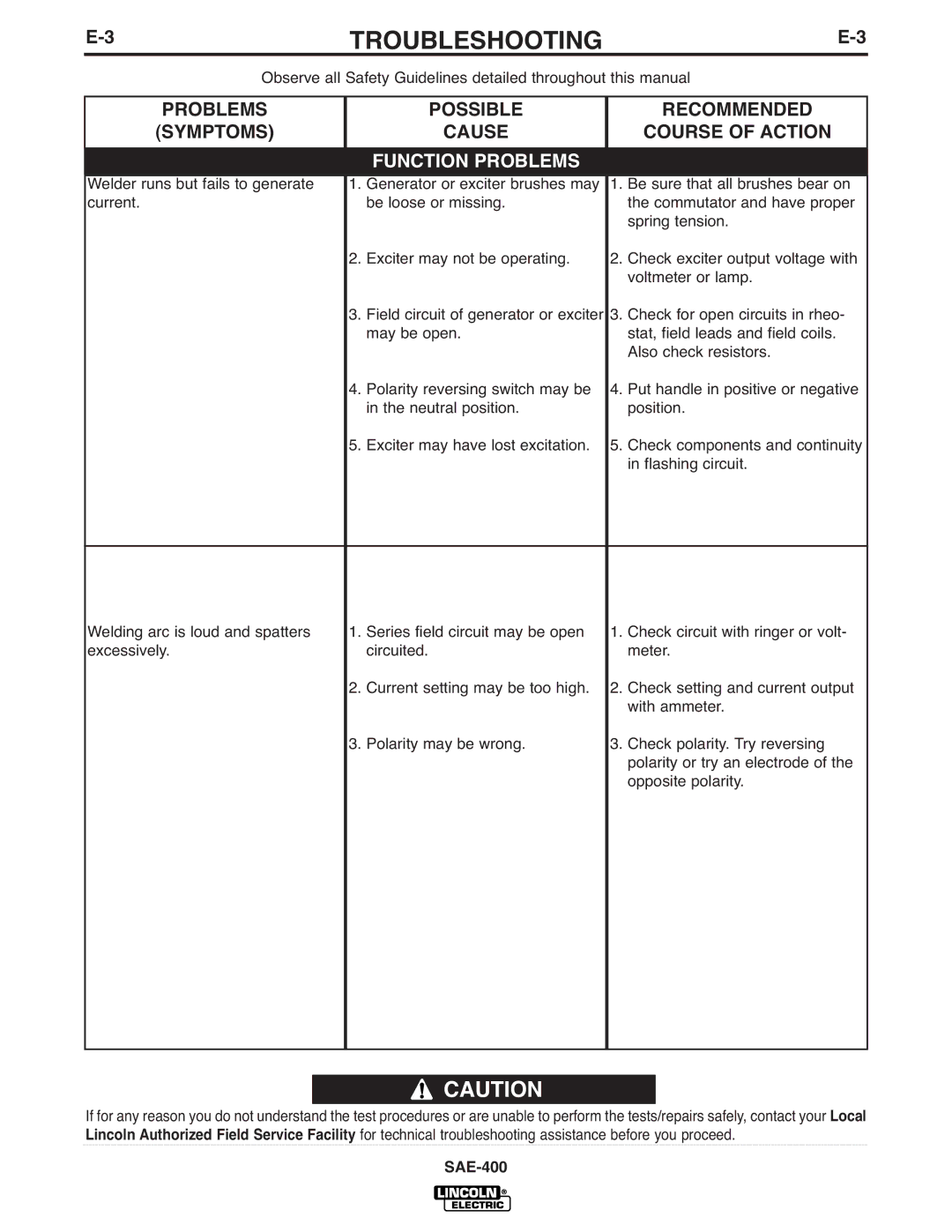
| TROUBLESHOOTING |
| |||
|
|
|
|
|
|
| Observe all Safety Guidelines detailed throughout this manual | ||||
|
|
|
|
|
|
| PROBLEMS |
| POSSIBLE |
| RECOMMENDED |
| (SYMPTOMS) |
| CAUSE |
| COURSE OF ACTION |
|
|
|
|
|
|
|
|
| FUNCTION PROBLEMS |
|
|
|
|
|
| ||
Welder runs but fails to generate | 1. Generator or exciter brushes may | 1. | Be sure that all brushes bear on | ||
current. |
| be loose or missing. |
| the commutator and have proper | |
|
|
|
|
| spring tension. |
|
| 2. | Exciter may not be operating. | 2. | Check exciter output voltage with |
|
|
|
|
| voltmeter or lamp. |
|
| 3. | Field circuit of generator or exciter 3. | Check for open circuits in rheo- | |
|
|
| may be open. |
| stat, field leads and field coils. |
|
|
|
|
| Also check resistors. |
|
| 4. | Polarity reversing switch may be | 4. | Put handle in positive or negative |
|
|
| in the neutral position. |
| position. |
|
| 5. | Exciter may have lost excitation. | 5. | Check components and continuity |
|
|
|
|
| in flashing circuit. |
Welding arc is loud and spatters | 1. | Series field circuit may be open | 1. | Check circuit with ringer or volt- |
excessively. |
| circuited. |
| meter. |
| 2. | Current setting may be too high. | 2. | Check setting and current output |
|
|
|
| with ammeter. |
| 3. | Polarity may be wrong. | 3. | Check polarity. Try reversing |
|
|
|
| polarity or try an electrode of the |
|
|
|
| opposite polarity. |
![]() CAUTION
CAUTION
If for any reason you do not understand the test procedures or are unable to perform the tests/repairs safely, contact your Local Lincoln Authorized Field Service Facility for technical troubleshooting assistance before you proceed.
